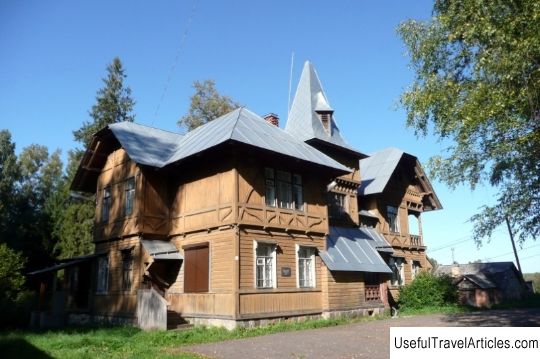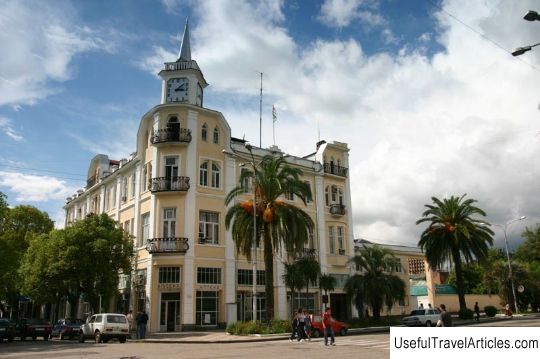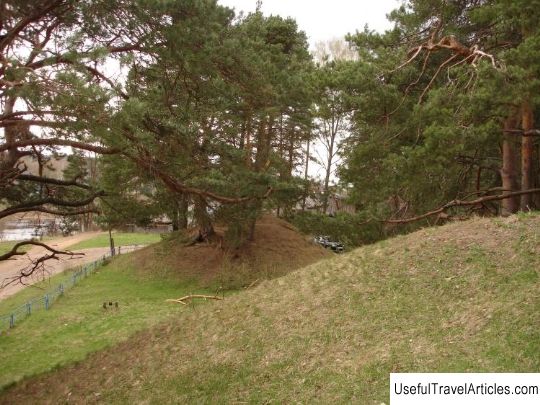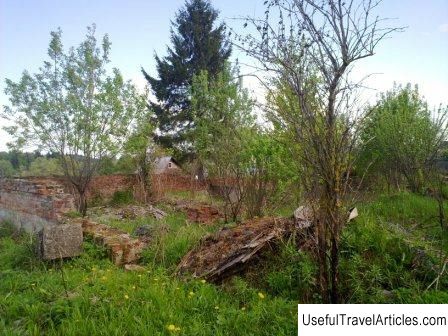Estate of I. L. Goremykina description and photo - Russia - North-West: Novgorod region
Rating: 9,5/10 (2940 votes) 
I.L. Goremykina description and photo - Russia - North-West: Novgorod region. Detailed information about the attraction. Description, photos and a map showing the nearest significant objects. Photo and descriptionAt the confluence of the Belaya river with the Mstu river, and this is approximately in the center of the village of Lyubytino, there is the Beloe estate, which earlier belonged to Ivan Logginovich Goremykin. Six buildings of the late nineteenth century, a family crypt, have survived to this day. There is a park on the territory of the estate. The building in the Gothic style attracts much attention; now this building houses an art school. The Beloye estate is the family estate of I.L. Goremykina. His parents owned the estate throughout the eighteenth century. The year 1846 was marked by the construction of a new manor house, which consisted of more than twenty rooms. It was built according to the same plan as the old house, which had stood for about a century. Ivan Logginovich Goremykin was a famous statesman during the reign of Alexander III and Nicholas II. Goremykin had a philosophical outlook, was distinguished by thoughtfulness, was influenced by the Tolstoyans movement and was associated with liberal-minded contemporaries, in his activities he strictly followed the letter of the law. For a long time he worked in the Senate in the peasant department. In the eighties of the nineteenth century he worked at the Ministry of the Interior. In 1891 he was the author of a set of orders on agriculture. After the February Revolution in 1917, he retired and was summoned to the Extraordinary Commission under the Provisional Government for interrogations. During the attack on his summer cottage, he was killed. The owners of the house were enlightened people. Famous people came to their estate, A.V. Suvorov, when I was passing through those parts. According to the descriptions, the Goremykin library was very large (unfortunately, it has not survived). It contained books not only in Russian, but also in French and German. In addition to printed editions, the library also kept handwritten ones. Also in the library there were letters from different people with whom the owners corresponded, just old documents, some written not even on paper, but on parchment. In addition to rare books and papers, antiques were of particular value in the manor house: icons inherited by more than one generation; furniture made of valuable wood species; various objects and things belonging to the periods of the reign of Peter the Great and both Catherines. The walls of the rooms of the house were decorated with portraits and watercolors by famous artists. At the beginning of the last century, the Goremykins' estate was a fairly strong economy, this is reflected in the document "Tables of private households" dated 1911. It was inhabited by people: nine women, fifteen men. There were animals: twenty-eight horses; cattle (bulls and cows) - eighty; young animals (calves) - thirty-five. Around the estate there were significant plots of arable land, hayfields, large tracts of forest and other land. On the territory of the estate there were also religious buildings - this is an old chapel and a very small ancestral cemetery, where representatives of the Goremykin family were buried, among which also lies the famous Vasily Goremykin, who was Peter the Great's orderly. Tombstones were installed on the graves. During the formation of Soviet power, which took place in the twenties of the last century, the house of the Goremykins burned down, almost all things and relics were lost in the fire, little was saved: a few books and very few things. The fire spared the house in which the estate manager lived. Nowadays it has been given the status of an architectural monument and is protected by the state.          We also recommend reading Pinacoteca Ambrosiana description and photos - Italy: Milan Topic: Estate of I. L. Goremykina description and photo - Russia - North-West: Novgorod region. |




